The multiple’s logistics chief takes Liz Hamson round its new non-food depot and spells out the benefits to the supply chain
Cheeky Scouse bastard” is not a phrase you would expect to be used to describe a member of Tesco’s senior management team. But the words used by one analyst to describe the multiple’s soon-to-be head of international prove unexpectedly apt as IT and logistics director Philip Clarke holds up a packet of pink thongs from the Value range to demonstrate the merits of single-product packs versus ratio packs (packs that contain the full size range, say, of a particular product).
The incident occurs midway through a tour of Fastway, Tesco’s 256,000 sq ft new non-food distribution depot at Daventry International Rail Freight Terminal and Clarke smiles a “who me?” smile before pleading for no pictures and moving on, stopping intermittently to chat and joke with staff.
His easy manner and common touch have endeared him to colleagues and depot staff alike. But they also belie a sharp intellect and driving ambition, say people who have worked closely with him. “He’s a lot brighter than people think. He’s one of those guys who likes to hide it,” says one analyst. Now the man who snuck up on the analysts’ blind side to become “Mr Supply Chain” is preparing to take on a much bigger role and one that is widely seen as second only to Sir Terry Leahy’s. So what can we expect?
Clarke joined Tesco full time 22 years ago as a graduate store management trainee, having worked for the multiple part-time since 1974. When he took on his current role in 2000, the analysts were still none the wiser about the man taking on the “boring” job of looking after Tesco’s IT and logistics. The keen advocate of lean thinking was soon to mark his card, however.
Now credited as one of the driving forces behind the multiple’s bid to tackle its availability problems, the 43-year old pushed ahead with factory gate pricing and then with continuous replenishment - deliveries twice a day to stores. Rolled out first on its fast-moving ambient lines, CR is now being applied to fresh produce with its Full and Fresh programme (The Grocer, October 4).
Clarke says: “Fresh food availability is an area where we think there are big opportunities to improve. The improvements will be two-fold: we’ll be able extend our safety stock and deliveries will be twice a day.”
He adds: “The real trick is transport optimisation. We did factory gate pricing and got a new consolidated network for fresh food. Now we want to reduce the lead time from order to DC from 50 hours to 48 hours and from DC to store to less than 12 hours.” Clarke hints that Tesco is on the look out for sites for two new fresh depots to handle the increased capacity, though he does not disclose where.
Coping with the rapid expansion of its non-food has been another major challenge. As we continue our tour around the Fastway depot, which has been dedicated to Tesco’s clothing ranges, Clarke frowns as he comes across a cardboard pack with a punch panel he can’t punch. “Can you get someone onto the supplier?” he asks a member of staff. “We can’t have that.” And his brow furrows again when he spots a back-to-school pack. “Back to school is over - get rid of it.”
Fastway opened in the nick of time, says Clarke, admitting that the non-food supply chain was beginning to buckle under the strain. The new depot has enabled Tesco to reduce the number of stock holding points from five to one. Its intelligent systems (see panel, far right) allows it to hold just £2m worth of stock rather than the £6m it would have held without them. And more deliveries are now made on double-deck trailers, improving efficiencies further.
Clarke thinks that Tesco can apply many of the principles of its fresh food delivery strategy to non-food. Speed is obviously of the essence. Deliveries to larger stores are now made up to five times a week and Tesco is piloting two rail freight programmes as potential alternatives to road transportation, one from the docks to Daventry and the other between Daventry and Scotland. Most grocers eschew rail on the grounds that it is too expensive and there have been reliability problems with the docks to Daventry trains, but Clarke thinks rail could be a viable option if it the problems are ironed out and it can transport goods frequently enough and in sufficient volumes. Approximately 8% of its clothing lines are currently transported by rail.
Even though Fastway has only been open eight weeks, Tesco is already on the look out for new non-food sites. Clarke confirms that is poised to open a 110,000 sq ft cross-docking depot in Livingstone, a mile or so from an existing fresh food depot in the Scottish town “We were running out of space in the two Scottish depots,” he explains. “This way, we’ll be able to move national products and non food through the new depot to store and free up space in the current depots.” It will “simplify the trunk”, says Clarke, invoking Tesco’s adopted mantra: “The lean theory says that if you have fewer stocking points, you eliminate time and eliminate waste.”
Clarke estimates that the whole chain now holds about a month less stock in the system. Staff in the clothing department are now on the shop floor for 80% rather than 60% of their time, he adds, and depot productivity is up 40%. He also has positive news on Tesco’s radio frequency identification tag trial at its Sandhurst store, which he visited earlier in the day. DVDs have been tagged and, he reports, staff are saving an estimated four hours a day on replenishment. Roll out at tray level in its high value depots is expected to complete next year, after which it will be rolled out to stores. However, until the technology comes down substantially in price, says Clarke, there are no plans to roll it out at product level.
Not everything has gone according to plan. Earlier this year Tesco fell out with Coca-Cola over who should foot the bill for a new dolly that could be wheeled straight from the warehouse to the shop floor, reducing handling - the dispute has yet to be resolved. And availability is still a problem. But Clarke is generally seen to have done a good job.
Now attention is turning to what he will do in his new international role. It will be a tough job, says one analyst. “Let’s not get too carried away with a £220m trading profit on a £4.5bn investment. That’s just 10% - it must double that to be where it wants.”
Meanwhile, Sir Terry is said to be pleased with the man widely considered his heir apparent. Except for one thing: Clarke supports Liverpool... while Sir Terry is a diehard Everton fan.
Cheeky Scouse bastard” is not a phrase you would expect to be used to describe a member of Tesco’s senior management team. But the words used by one analyst to describe the multiple’s soon-to-be head of international prove unexpectedly apt as IT and logistics director Philip Clarke holds up a packet of pink thongs from the Value range to demonstrate the merits of single-product packs versus ratio packs (packs that contain the full size range, say, of a particular product).
The incident occurs midway through a tour of Fastway, Tesco’s 256,000 sq ft new non-food distribution depot at Daventry International Rail Freight Terminal and Clarke smiles a “who me?” smile before pleading for no pictures and moving on, stopping intermittently to chat and joke with staff.
His easy manner and common touch have endeared him to colleagues and depot staff alike. But they also belie a sharp intellect and driving ambition, say people who have worked closely with him. “He’s a lot brighter than people think. He’s one of those guys who likes to hide it,” says one analyst. Now the man who snuck up on the analysts’ blind side to become “Mr Supply Chain” is preparing to take on a much bigger role and one that is widely seen as second only to Sir Terry Leahy’s. So what can we expect?
Clarke joined Tesco full time 22 years ago as a graduate store management trainee, having worked for the multiple part-time since 1974. When he took on his current role in 2000, the analysts were still none the wiser about the man taking on the “boring” job of looking after Tesco’s IT and logistics. The keen advocate of lean thinking was soon to mark his card, however.
Now credited as one of the driving forces behind the multiple’s bid to tackle its availability problems, the 43-year old pushed ahead with factory gate pricing and then with continuous replenishment - deliveries twice a day to stores. Rolled out first on its fast-moving ambient lines, CR is now being applied to fresh produce with its Full and Fresh programme (The Grocer, October 4).
Clarke says: “Fresh food availability is an area where we think there are big opportunities to improve. The improvements will be two-fold: we’ll be able extend our safety stock and deliveries will be twice a day.”
He adds: “The real trick is transport optimisation. We did factory gate pricing and got a new consolidated network for fresh food. Now we want to reduce the lead time from order to DC from 50 hours to 48 hours and from DC to store to less than 12 hours.” Clarke hints that Tesco is on the look out for sites for two new fresh depots to handle the increased capacity, though he does not disclose where.
Coping with the rapid expansion of its non-food has been another major challenge. As we continue our tour around the Fastway depot, which has been dedicated to Tesco’s clothing ranges, Clarke frowns as he comes across a cardboard pack with a punch panel he can’t punch. “Can you get someone onto the supplier?” he asks a member of staff. “We can’t have that.” And his brow furrows again when he spots a back-to-school pack. “Back to school is over - get rid of it.”
Fastway opened in the nick of time, says Clarke, admitting that the non-food supply chain was beginning to buckle under the strain. The new depot has enabled Tesco to reduce the number of stock holding points from five to one. Its intelligent systems (see panel, far right) allows it to hold just £2m worth of stock rather than the £6m it would have held without them. And more deliveries are now made on double-deck trailers, improving efficiencies further.
Clarke thinks that Tesco can apply many of the principles of its fresh food delivery strategy to non-food. Speed is obviously of the essence. Deliveries to larger stores are now made up to five times a week and Tesco is piloting two rail freight programmes as potential alternatives to road transportation, one from the docks to Daventry and the other between Daventry and Scotland. Most grocers eschew rail on the grounds that it is too expensive and there have been reliability problems with the docks to Daventry trains, but Clarke thinks rail could be a viable option if it the problems are ironed out and it can transport goods frequently enough and in sufficient volumes. Approximately 8% of its clothing lines are currently transported by rail.
Even though Fastway has only been open eight weeks, Tesco is already on the look out for new non-food sites. Clarke confirms that is poised to open a 110,000 sq ft cross-docking depot in Livingstone, a mile or so from an existing fresh food depot in the Scottish town “We were running out of space in the two Scottish depots,” he explains. “This way, we’ll be able to move national products and non food through the new depot to store and free up space in the current depots.” It will “simplify the trunk”, says Clarke, invoking Tesco’s adopted mantra: “The lean theory says that if you have fewer stocking points, you eliminate time and eliminate waste.”
Clarke estimates that the whole chain now holds about a month less stock in the system. Staff in the clothing department are now on the shop floor for 80% rather than 60% of their time, he adds, and depot productivity is up 40%. He also has positive news on Tesco’s radio frequency identification tag trial at its Sandhurst store, which he visited earlier in the day. DVDs have been tagged and, he reports, staff are saving an estimated four hours a day on replenishment. Roll out at tray level in its high value depots is expected to complete next year, after which it will be rolled out to stores. However, until the technology comes down substantially in price, says Clarke, there are no plans to roll it out at product level.
Not everything has gone according to plan. Earlier this year Tesco fell out with Coca-Cola over who should foot the bill for a new dolly that could be wheeled straight from the warehouse to the shop floor, reducing handling - the dispute has yet to be resolved. And availability is still a problem. But Clarke is generally seen to have done a good job.
Now attention is turning to what he will do in his new international role. It will be a tough job, says one analyst. “Let’s not get too carried away with a £220m trading profit on a £4.5bn investment. That’s just 10% - it must double that to be where it wants.”
Meanwhile, Sir Terry is said to be pleased with the man widely considered his heir apparent. Except for one thing: Clarke supports Liverpool... while Sir Terry is a diehard Everton fan.




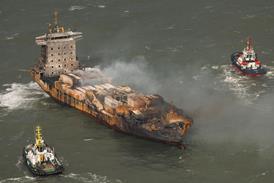


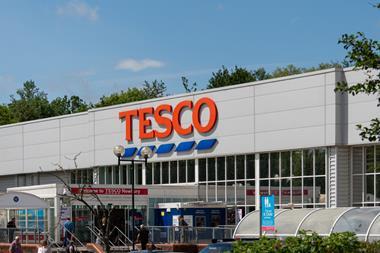

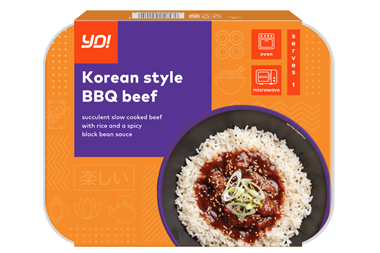
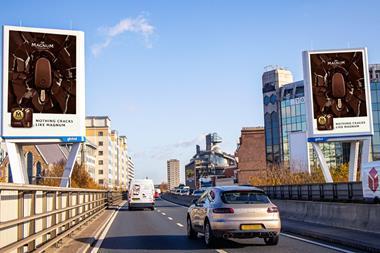


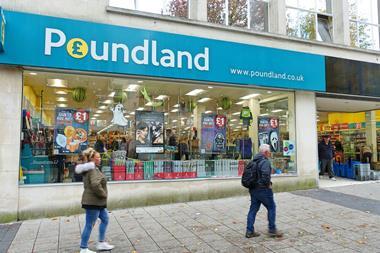

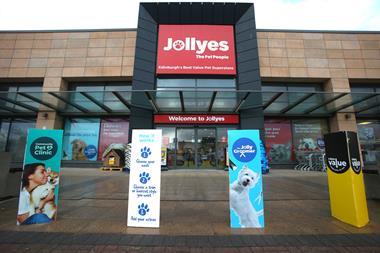
No comments yet